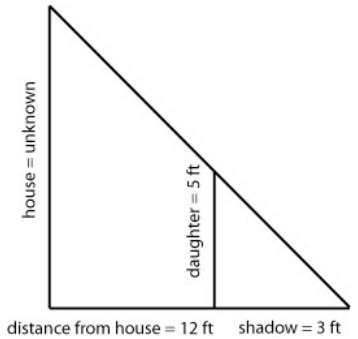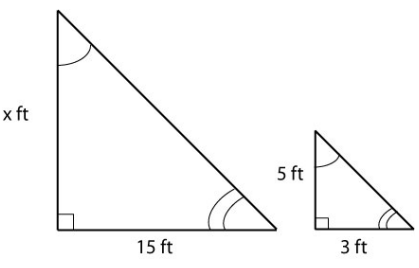In the 2004 vice-presidential debates, Democratic contender John Edwards claimed that US forces have suffered “90% of the coalition casualties” in Iraq. Incumbent Vice President Dick Cheney disputed this, saying that in fact Iraqi security forces and coalition allies “have taken almost 50 percent” of the casualties.[1]
Who was correct? How can we make sense of these numbers?
In this section, we will show how the idea of percent is used to describe parts of a whole. Percents are prevalent in the media we consume regularly, making it imperative that you understand what they mean and where they come from.
We will also show you how to compare different quantities using proportions. Proportions can help us understand how things change or relate to each other.
Learning Objectives
In this lesson you will learn how to do the following:
- Given the part and the whole, write a percent
- Calculate both relative and absolute change of a quantity
- Calculate tax on a purchase
Percents
Percent literally means “per 100,” or “parts per hundred.” When we write 40%, this is equivalent to the fraction [latex]\displaystyle\frac{40}{100}[/latex] or the decimal 0.40. Notice that 80 out of 200 and 10 out of 25 are also 40%, since [latex]\displaystyle\frac{80}{200}=\frac{10}{25}=\frac{40}{100}[/latex].
Percent
If we have a part that is some percent of a whole, then [latex]\displaystyle\text{percent}=\frac{\text{part}}{\text{whole}}[/latex], or equivalently, [latex]\text{part}\cdot\text{whole}=\text{percent}[/latex].
To do the calculations, we write the percent as a decimal.
For a refresher on basic percentage rules, using the examples on this page, view the following video.
Examples
In a survey, 243 out of 400 people state that they like dogs. What percent is this?
Example
Write each as a percent:
- [latex]\displaystyle\frac{1}{4}[/latex]
- 0.02
- 2.35
TRY IT NOW
Throughout this text, you will be given opportunities to answer questions and know immediately whether you answered correctly. To answer the question below, do the calculation on a separate piece of paper and enter your answer in the box. Click on the submit button , and if you are correct, a green box will appear around your answer. If you are incorrect, a red box will appear. You can click on “Try Another Version of This Question” as many times as you like. Practice all you want!
Example
In the news, you hear “tuition is expected to increase by 7% next year.” If tuition this year was $1200 per quarter, what will it be next year?
TRY IT NOW
Example
The value of a car dropped from $7400 to $6800 over the last year. What percent decrease is this?
Absolute and Relative Change
Given two quantities,
Absolute change =[latex]\displaystyle|\text{ending quantity}-\text{starting quantity}|[/latex]
Relative change: [latex]\displaystyle\frac{\text{absolute change}}{\text{starting quantity}}[/latex]
- Absolute change has the same units as the original quantity.
- Relative change gives a percent change.
The starting quantity is called the base of the percent change.
For a deeper dive on absolute and relative change, using the examples on this page, view the following video.
The base of a percent is very important. For example, while Nixon was president, it was argued that marijuana was a “gateway” drug, claiming that 80% of marijuana smokers went on to use harder drugs like cocaine. The problem is, this isn’t true. The true claim is that 80% of harder drug users first smoked marijuana. The difference is one of base: 80% of marijuana smokers using hard drugs, vs. 80% of hard drug users having smoked marijuana. These numbers are not equivalent. As it turns out, only one in 2,400 marijuana users actually go on to use harder drugs.[2]
Example
There are about 75 QFC supermarkets in the United States. Albertsons has about 215 stores. Compare the size of the two companies.
Example
Suppose a stock drops in value by 60% one week, then increases in value the next week by 75%. Is the value higher or lower than where it started?
A video walk-through of this example can be seen here.
Consideration of the base of percentages is explored in this video, using the examples on this page.
TRY IT NOW
Example
A Seattle Times article on high school graduation rates reported “The number of schools graduating 60 percent or fewer students in four years—sometimes referred to as ‘dropout factories’—decreased by 17 during that time period. The number of kids attending schools with such low graduation rates was cut in half.”
- Is the “decreased by 17” number a useful comparison?
- Considering the last sentence, can we conclude that the number of “dropout factories” was originally 34?
Example
Let’s return to the example at the top of this page. In the 2004 vice-presidential debates, Democratic candidate John Edwards claimed that US forces have suffered “90% of the coalition casualties” in Iraq. Cheney disputed this, saying that in fact Iraqi security forces and coalition allies “have taken almost 50 percent” of the casualties. Who is correct?
A detailed explanation of these examples can be viewed here.
Think About It
In the 2012 presidential elections, one candidate argued that “the president’s plan will cut $716 billion from Medicare, leading to fewer services for seniors,” while the other candidate rebuts that “our plan does not cut current spending and actually expands benefits for seniors, while implementing cost saving measures.” Are these claims in conflict, in agreement, or not comparable because they’re talking about different things?
 We’ll wrap up our review of percents with a couple cautions. First, when talking about a change of quantities that are already measured in percents, we have to be careful in how we describe the change.
We’ll wrap up our review of percents with a couple cautions. First, when talking about a change of quantities that are already measured in percents, we have to be careful in how we describe the change.
Example
A politician’s support increases from 40% of voters to 50% of voters. Describe the change.
Lastly, a caution against averaging percents.
Example
A basketball player scores on 40% of 2-point field goal attempts, and on 30% of 3-point of field goal attempts. Find the player’s overall field goal percentage.
For more information about these cautionary tales using percentages, view the following.
Proportions and Rates
If you wanted to power the city of Lincoln, Nebraska using wind power, how many wind turbines would you need to install? Questions like these can be answered using rates and proportions.
Rates
A rate is the ratio (fraction) of two quantities.
A unit rate is a rate with a denominator of one.
Example
Your car can drive 300 miles on a tank of 15 gallons. Express this as a rate.
Proportion Equation
A proportion equation is an equation showing the equivalence of two rates or ratios.
For an overview on rates and proportions, using the examples on this page, view the following video.
Example
Solve the proportion [latex]\displaystyle\frac{5}{3}=\frac{x}{6}[/latex] for the unknown value x.
Example
A map scale indicates that ½ inch on the map corresponds with 3 real miles. How many miles apart are two cities that are [latex]\displaystyle{2}\frac{1}{4}[/latex] inches apart on the map?
Example
Your car can drive 300 miles on a tank of 15 gallons. How far can it drive on 40 gallons?
A worked example of this last question can be found in the following video.
Notice that with the miles per gallon example, if we double the miles driven, we double the gas used. Likewise, with the map distance example, if the map distance doubles, the real-life distance doubles. This is a key feature of proportional relationships, and one we must confirm before assuming two things are related proportionally.
You have likely encountered distance, rate, and time problems in the past. This is likely because they are easy to visualize and most of us have experienced them first hand. In our next example, we will solve distance, rate and time problems that will require us to change the units that the distance or time is measured in.
Example
A bicycle is traveling at 15 miles per hour. How many feet will it cover in 20 seconds?
View the following video to see this problem worked through.
TRY IT NOW
A 1000 foot spool of bare 12-gauge copper wire weighs 19.8 pounds. How much will 18 inches of the wire weigh, in ounces?
Example
Suppose you’re tiling the floor of a 10 ft by 10 ft room, and find that 100 tiles will be needed. How many tiles will be needed to tile the floor of a 20 ft by 20 ft room?
Other quantities just don’t scale proportionally at all.
Example
Suppose a small company spends $1000 on an advertising campaign, and gains 100 new customers from it. How many new customers should they expect if they spend $10,000?
Matters of scale in this example and the previous one are explained in more detail here.
Sometimes when working with rates, proportions, and percents, the process can be made more challenging by the magnitude of the numbers involved. Sometimes, large numbers are just difficult to comprehend.
Examples
The 2010 U.S. military budget was $683.7 billion. To gain perspective on how much money this is, answer the following questions.
- What would the salary of each of the 1.4 million Walmart employees in the US be if the military budget were distributed evenly amongst them?
- If you distributed the military budget of 2010 evenly amongst the 300 million people who live in the US, how much money would you give to each person?
- If you converted the US budget into $100 bills, how long would it take you to count it out – assume it takes one second to count one $100 bill.
Example
Compare the electricity consumption per capita in China to the rate in Japan.
Working with large numbers is examined in more detail in this video.
A Bit of Geometry
Geometric shapes, as well as area and volumes, can often be important in problem solving.
Let’s start things off with an example, rather than trying to explain geometric concepts to you.
Example
You are curious how tall a tree is, but don’t have any way to climb it. Describe a method for determining the height.
Similar Triangles
We introduced the idea of similar triangles in the previous example. One property of geometric shapes that we have learned is a helpful problem-solving tool is that of similarity. If two triangles are the same, meaning the angles between the sides are all the same, we can find an unknown length or height as in the last example. This idea of similarity holds for other geometric shapes as well.
Guided Example
Mary was out in the yard one day and had her two daughters with her. She was doing some renovations and wanted to know how tall the house was. She noticed a shadow 3 feet long when her daughter was standing 12 feet from the house and used it to set up figure 1.

Figure 1.
We can take that drawing and separate the two triangles as follows allowing us to focus on the numbers and the shapes.
These triangles are what are called similar triangles. They have the same angles and sides in proportion to each other. We can use that information to determine the height of the house as seen in figure 2.

Figure 2.
To determine the height of the house, we set up the following proportion:
[latex]\displaystyle\frac{x}{15}=\frac{5}{3}\\[/latex]
Then, we solve for the unknown x by using cross products as we have done before:
[latex]\displaystyle{x}=\frac{5\times{15}}{3}=\frac{75}{3}=25\\[/latex]
Therefore, we can conclude that the house is 25 feet high.
TRY IT NOW
It may be helpful to recall some formulas for areas and volumes of a few basic shapes:
Areas
| Rectangle | Circle, radius r |
| Area: [latex]L\times{W}[/latex] | Area: [latex]\pi{r^2}[/latex] |
| Perimeter: [latex]2l+2W[/latex] | Circumference[latex]2\pi{r}[/latex] |
| Rectangular Box | Cylinder |
| Volume: [latex]L\times{W}\times{H}[/latex] | Volume: [latex]\pi{r^2}h[/latex] |
In our next two examples, we will combine the ideas we have explored about ratios with the geometry of some basic shapes to answer questions. In the first example, we will predict how much dough will be needed for a pizza that is 16 inches in diameter given that we know how much dough it takes for a pizza with a diameter of 12 inches. The second example uses the volume of a cylinder to determine the number of calories in a marshmallow.
Examples
If a 12 inch diameter pizza requires 10 ounces of dough, how much dough is needed for a 16 inch pizza?
The following video illustrates how to solve this problem.
Example
A company makes regular and jumbo marshmallows. The regular marshmallow has 25 calories. How many calories will the jumbo marshmallow have?
For more about the marshmallow example, watch this video.
TRY IT NOW
A website says that you’ll need 48 fifty-pound bags of sand to fill a sandbox that measure 8ft by 8ft by 1ft. How many bags would you need for a sandbox 6ft by 4ft by 1ft?
Mary (from the application that started this topic), decides to use what she knows about the height of the roof to measure the height of her second daughter. If her second daughter casts a shadow that is 1.5 feet long when she is 13.5 feet from the house, what is the height of the second daughter? Draw an accurate diagram and use similar triangles to solve.
In the next section, we will explore the process of combining different types of information to answer questions.
Candela Citations
- Introduction: Proportional Relationships and a Bit of Geometry. Authored by: Lumen Learning. License: CC BY: Attribution
- Math in Society. Authored by: David Lippman. Located at: http://www.opentextbookstore.com/mathinsociety/. License: CC BY-SA: Attribution-ShareAlike
- Caution sign. Authored by: JDDesign. Located at: https://pixabay.com/en/industrial-safety-signal-symbol-1492046/. License: CC0: No Rights Reserved
- 40% shaded rectangle. Authored by: Clker-Free-Vector-Images. Located at: https://pixabay.com/en/percent-40-bar-progress-meter-40844/. License: CC0: No Rights Reserved
- Review of basic percents. Authored by: OCLPhase2's channel. Located at: https://youtu.be/Z229RysttR8. License: CC BY: Attribution
- Absolute and Relative Differences. Authored by: OCLPhase2's channel. Located at: https://youtu.be/QjVeurkg8CQ. License: CC BY: Attribution
- Importance of base in percents. Authored by: OCLPhase2's channel. Located at: https://youtu.be/nygw69JqwoQ. License: CC BY: Attribution
- Combining percents. Authored by: OCLPhase2's channel. Located at: https://youtu.be/4HNxwYMTNl8. License: CC BY: Attribution
- Evaluating claims involving percents. Authored by: OCLPhase2's channel. Located at: https://youtu.be/Svlu2Lurmsc. License: CC BY: Attribution
- Percentage points and averaging percents. Authored by: OCLPhase2's channel. Located at: https://youtu.be/vtgEkQUB5F8. License: CC BY: Attribution
- Question ID 17441, 17447, 17443. Authored by: Lippman, David. License: CC BY: Attribution. License Terms: IMathAS Community License CC-BY + GPL
- wind-364996_1280. Authored by: Stevebidmead. Located at: https://pixabay.com/en/wind-turbines-farmland-364996/. License: CC0: No Rights Reserved
- Basic rates and proportions. Authored by: OCLPhase2's channel. Located at: https://youtu.be/aZrio6ztHKE. License: CC BY: Attribution
- Proportions using dimensional analysis. Authored by: OCLPhase2's channel. Located at: https://youtu.be/jYwi3YqP0Wk. License: CC BY: Attribution
- Proportions with unit conversion. Authored by: OCLPhase2's channel. Located at: https://youtu.be/fyOcLcIVipM. License: CC BY: Attribution
- Considering how/if things scale. Authored by: OCLPhase2's channel. Located at: https://youtu.be/-e2typcrhLE. License: CC BY: Attribution
- Comparing quantities involving large numbers. Authored by: OCLPhase2's channel. Located at: https://youtu.be/rCLh8ZvSQr8. License: CC BY: Attribution
- Question ID 17454. Authored by: Lippman, David. License: CC BY: Attribution. License Terms: IMathAS Community License CC-BY + GPL




